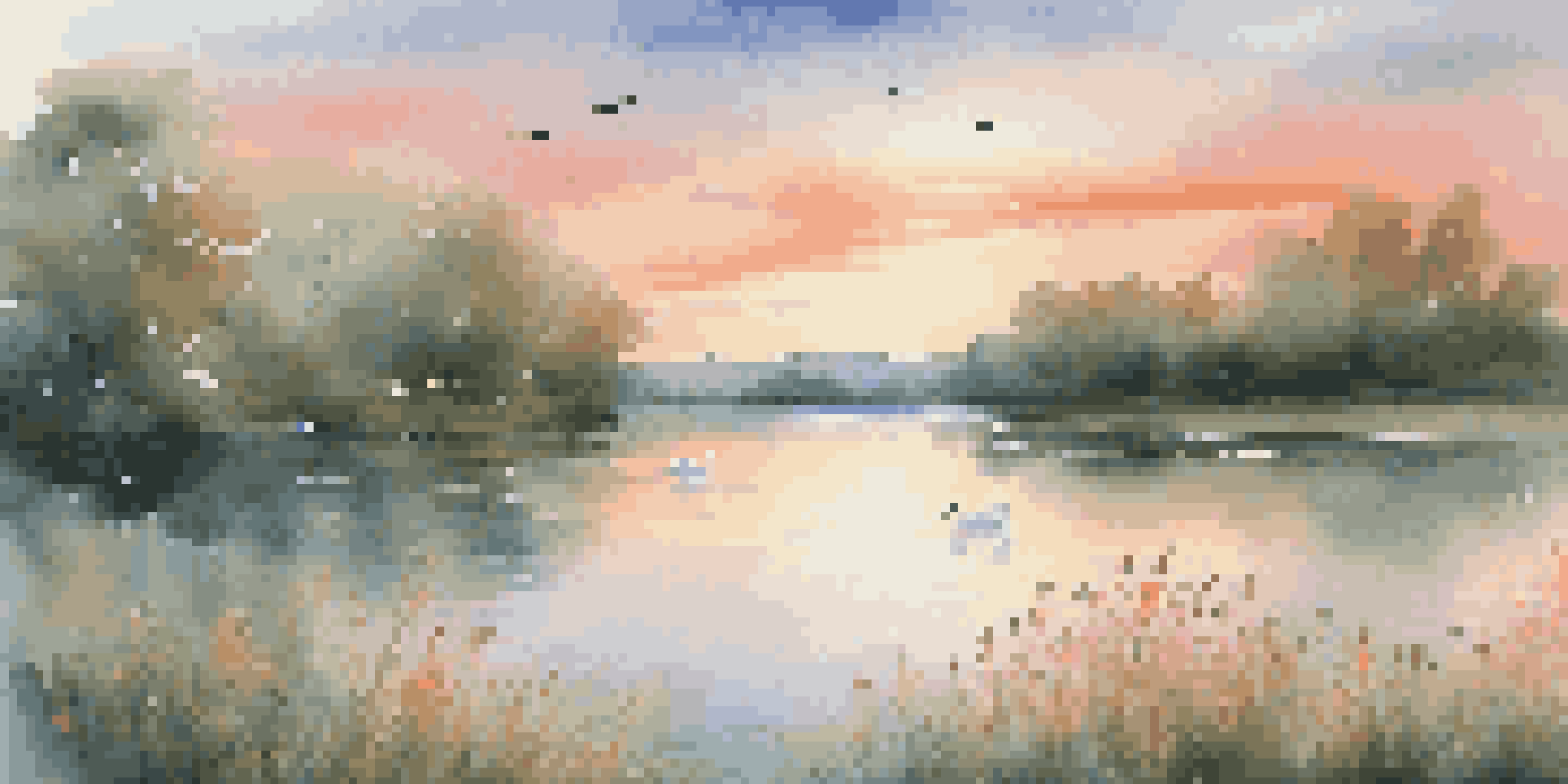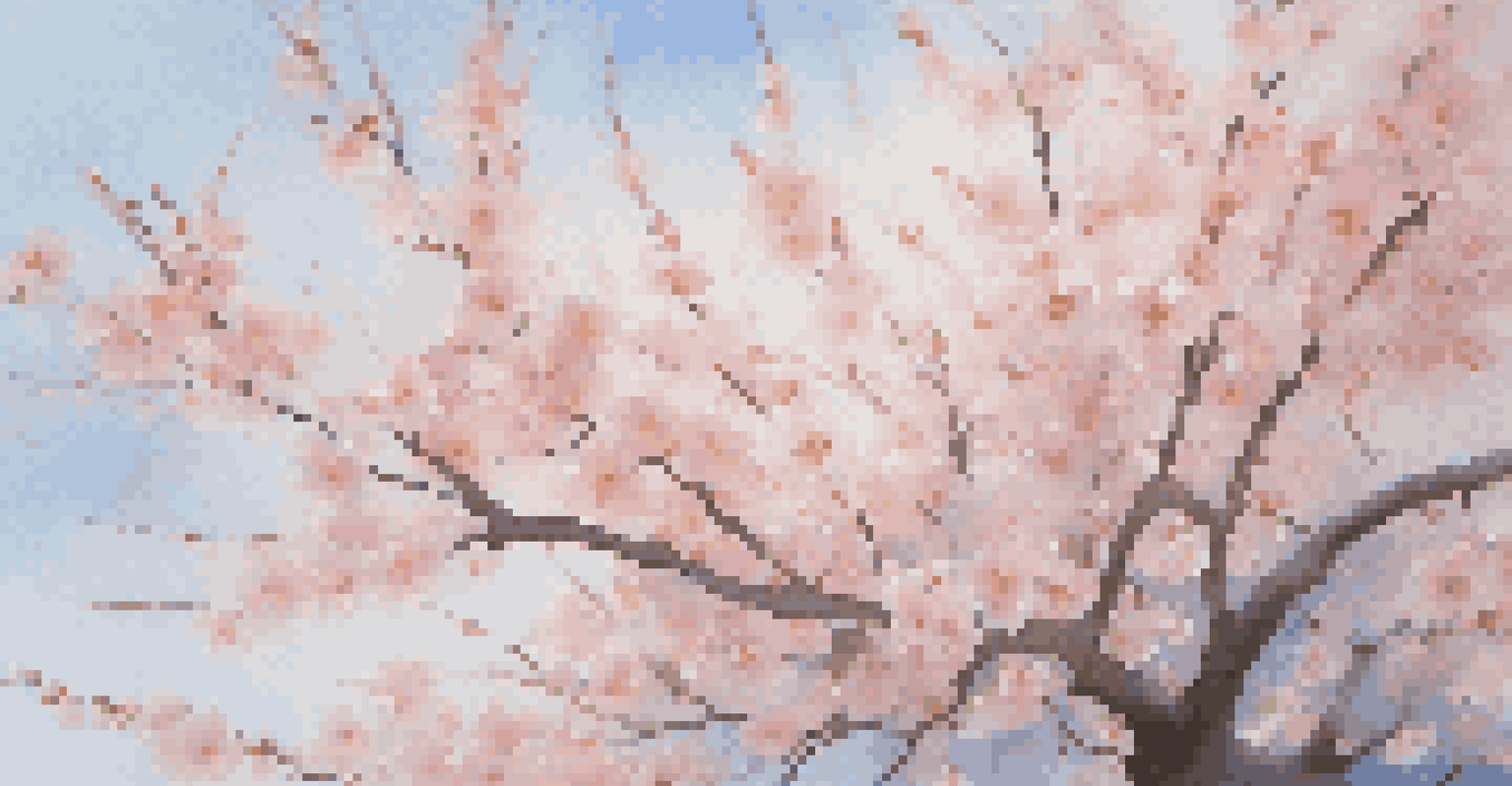Subconscious Influence of Nature in Artistic Expression

The Connection Between Nature and Art: An Overview
Nature has always been a profound source of inspiration for artists. From the delicate petals of flowers to the majestic mountains, the natural world offers a palette of colors and forms that fuel creativity. This connection often operates at a subconscious level, influencing artists without them even realizing it.
Nature is not a place to visit. It is home.
Many famous works of art, whether paintings, sculptures, or music, have been inspired by nature's beauty. Artists often find themselves drawn to landscapes, flora, and fauna, reflecting their surroundings in their creations. This relationship highlights the intrinsic bond between the artist and the world outside their studio.
Understanding this connection can enhance our appreciation of art, allowing us to see beyond the surface. When we recognize nature’s influence, we can discover deeper meanings and emotions behind artistic expressions, enriching our overall experience.
The Psychological Impact of Nature on Creativity
Numerous studies suggest that being in nature can boost our creativity and cognitive function. For artists, this means that spending time outdoors can lead to increased inspiration and productivity. Nature’s calming effects can also reduce stress, allowing artists to express themselves more freely.

The sights and sounds of nature can evoke emotions that are often difficult to articulate. This emotional resonance provides a wellspring of ideas for artists, who translate these feelings into their work. For instance, the sound of rustling leaves might inspire a melody, while a vibrant sunset could influence a color palette.
Nature Inspires Artistic Creativity
The natural world serves as a profound source of inspiration for artists, influencing their work in various subconscious ways.
Thus, nature serves not just as a backdrop, but as an active participant in the artistic process. By engaging with the environment, artists tap into a rich reservoir of inspiration that can profoundly shape their creative output.
Nature as a Symbol in Artistic Expression
In art, nature often serves as a symbol for broader themes such as life, death, and renewal. Artists frequently incorporate elements like blooming flowers or decaying leaves to convey complex ideas and emotions. These symbols resonate deeply with audiences, connecting them to fundamental human experiences.
Art is the most beautiful of all lies.
For example, Vincent van Gogh's 'Starry Night' portrays a swirling night sky that reflects both chaos and beauty, resonating with viewers on many levels. The cypress trees in the painting evoke a sense of mourning, while the stars can symbolize hope and wonder.
By embedding these natural symbols into their work, artists create a dialogue between their art and the viewers. This interplay invites audiences to explore their interpretations, making the experience of art even more personal and profound.
The Role of Natural Materials in Artistic Practices
Many artists use natural materials in their work, further highlighting the connection between nature and creativity. From clay and wood to natural pigments, these materials not only affect the aesthetics of the work but also imbue it with the essence of the natural world. This choice of medium can evoke a sense of earthiness and authenticity.
For instance, indigenous artists often use locally sourced materials, reflecting their cultural heritage and respect for the environment. This practice is not only a tribute to nature but also serves to preserve traditional techniques and narratives.
Symbols of Nature Convey Deep Themes
Artists often use natural elements as symbols to express complex themes like life, death, and renewal, creating a dialogue with viewers.
By incorporating natural materials, artists invite viewers to engage with the artwork on a tactile level, creating a deeper connection. This sensory experience helps to reinforce the themes of nature and its influence on artistic expression.
Nature's Influence in Various Artistic Disciplines
The influence of nature extends beyond visual arts; it permeates music, literature, and performance as well. Composers often draw inspiration from the sounds of nature, incorporating elements like birdsong or water flows into their compositions. This blending of natural sounds with musical notes creates a harmonious experience for listeners.
In literature, nature frequently serves as a backdrop or character within narratives. Poets and authors often use natural imagery to convey emotions and themes, allowing readers to explore the deeper meanings behind the text. For instance, a storm might reflect inner turmoil, while a calm meadow might symbolize peace.
Moreover, in performance arts, nature can be a powerful motif, with dancers and actors embodying natural elements. This multifaceted influence showcases how deeply intertwined nature is with various forms of artistic expression, enriching them in unique ways.
The Evolution of Nature in Contemporary Art
In contemporary art, the influence of nature continues to evolve, often reflecting current environmental concerns. Many modern artists engage with themes of sustainability and climate change, using their work to raise awareness about ecological issues. This approach not only highlights nature's beauty but also its fragility.
For example, artists like Olafur Eliasson create immersive installations that encourage viewers to reflect on their relationship with the environment. These experiences challenge audiences to consider their impact on nature, fostering a deeper connection between art and activism.
Contemporary Art Tackles Ecological Issues
Modern artists increasingly engage with themes of sustainability and climate change, using their work to raise awareness about environmental concerns.
As artists navigate the complexities of our modern world, nature remains a vital source of inspiration. Their works serve as a reminder of the importance of preserving the natural environment and appreciating its role in our lives.
Conclusion: Embracing Nature's Influence in Art
The subconscious influence of nature in artistic expression is a testament to the profound connection between the two. Whether through symbolism, materials, or themes, nature continually inspires artists to create meaningful works that resonate with audiences. This relationship not only enhances the creative process but also connects us to the world around us.
By embracing nature as a source of inspiration, artists can explore deeper themes and emotions, enriching their artistic journeys. As we engage with art, recognizing this influence can deepen our understanding and appreciation of the work.

Ultimately, nature invites us to reflect on our own connections with the world, reminding us that art is not just a reflection of life, but a bridge between humanity and the environment.